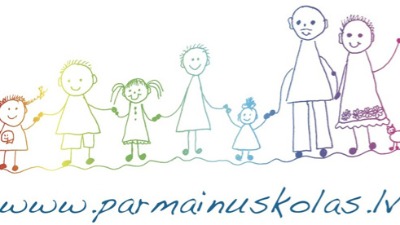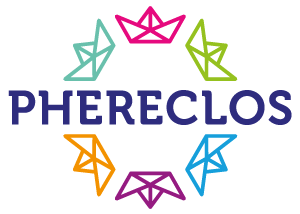School as a Multifunctional Community Resource
- Latvia,Rural areas
- 2009

| Time frame | |
| Categories | |
| Level of Schools | |
| External Partners | |
| Type of Schools | |
| URL | |
| Number of Schools involved | |
| Number of Schoolheads involved | |
| Number of Teachers involved | |
| Number of Students involved | |
| Number of Parents involved | |
| Number of External Partners involved |
The initiative “School as a Multifunctional Community Resource” supports development of sustainable partnerships among schools, local communities and broader civil society in transforming schools into multifunctional community resource centers. The initiative also prevented the closure of several schools in rural areas of Latvia.
The goals of the Initiative are:
- to promote school-based community development models at the regional and national level and support changes at the policy level to assure scaling up and sustainability of the initiative.
- to promote revival of small schools in economically and socially depressed, rural areas, small towns and urban peripheries and to develop such schools into multifunctional community resource centres;
- to support development of sustainable partnerships among schools, local communities and broader civil society.
The main objectives are:
- improving access to formal and informal education for all generations including expanding and improving early childhood provisions,
- promoting civic participation and grassroots engagement in diverse activities,
- diversifying employment opportunities by raising entrepreneurial skills and building culture of inclusion and social cohesion in the communities.
After the initial phase the actual organizational change has happened and made the programme self-sustaining.
Local municipalities and schools had to send an application describing their plans to implement the programme that covered the following activity fields:
• maintaining and expanding “typical” functions of schools
• offering adult education activities
• developing specific services for young children and their families (e.g. child care, play groups)
• supporting entrepreneurship and increasing employability potential
• building partnerships and civic participation
After this planning and application phase schools’ re-profiling and capacity building was funded by the foundation and supported by the national Education Development Centre.
There was an original funding for the transformation by the initiating organization for
- schools/communities committed to re-profiling into multifunctional learning community centers
- building capacity of local change agents: providing/offering know-how to support the re-profiling of schools
After the initial phase there is no need for extra funding
The primary aim of the initiative was to prevent schools from closing down, and it was successful. At the same time, it was also important to change what schools are providing for their local communities.
Supporting schools in returning to their deeper function – to be the centre for development and growth of the community – is a significant contribution to the lifelong learning opportunities for local people in the context of the 21st century which results in increased well-being and quality of life. Schools play an exceptionally important role in promoting social cohesion as they are close to people with their real needs and can reach almost all the people through families, neighbourhood links etc.
Schools have started to realize that they have human resources, infrastructure and equipment that allow implementing wider functions, serving diverse groups of the population and raising civic participation.
It became clear that the existing resources and potentials of schools are not fully utilized by the schools, communities and systems in general. Utilizing them and promoting learning and providing diverse, non-threatening learning opportunities for adults and children is for the benefit of everybody.
It became clear that it is not enough to train teachers and local people; it is crucial to provide place, time and opportunities (and encourage people) to reflect, provide feedback, share, internalize, develop a sense of ownership to new ideas and activities.
Although there was a kind of helpful external pressure to reinvent themselves (the threat of being closed), these schools have managed to implement a sustainable change in their whole operation without having to rely on external funding for longer than the initial phase. The outcome is a truly 21st century role for schools in their local communities and moving away from their 18th-19th century roots.
Holistic approach to education and development was used where activities are closely linked and support each other towards greater social cohesion, economic activity/employability, cultural diversity and sensitivity, environmental awareness, wellbeing of individuals and communities.
Schools were in a position to decide, plan and implement different activities in addition to formal education and curricula both for students and adult audiences (teachers, parents, other community members. Main directions of activities include: 1) Maintaining and expanding “typical” functions of schools (ensuring implementation of the formal education programs); 2) Promoting lifelong learning, active citizenship and building skills for civic participation; 3) Promoting and implementing holistic, high quality support to young children and their families, and 4) Promoting entrepreneurship and increasing employability through adult education programs, vocational trainings, and motivation programs.
School leadership teams and staff developed and applied initiative, enthusiasm and commitment in order to reach their goals. They developed management, cooperation and communication skills acting within the school and in relation to the wider community. New leaders grew out of the pool of teachers and new skills were developed that also influenced the quality of the direct responsibilities of the teachers.
Promoting balanced regional development, providing access to early childhood development services, increasing potential for employability and entrepreneurship; diversifying employment opportunities by raising entrepreneurial skills and building culture of inclusion and social cohesion in the communities, etc.
All implementation was a result of participatory decision making and also delivered by the local communities.
The network of participating schools was maintained for mutual learning. At the same time, including non- traditional learning provisions in the school has provided a local opportunity for mutual learning.
The ultimate aim of the initiative was to include local communities in education, so it has to be considered a fully inclusive programme.
The holistic educational approach implemented also meant that schools had to leave their regular silos, including subject silos.
The programme is built on the cooperation of all local stakeholders including local municipalities to define, implement and maintain educational activities for the whole local community.
The programme was implemented in rural Latvia where local communities are traditionally stronger than in larger towns and cities.
All schools decided on their own reinvention with the participation of their own school community having an ownership of the initiative, and once implementation started, local community stakeholders also had to take ownership, becoming an active part as decision makers, participants and providers.
The fact that change became sustainable clearly shows a good cooperation among local partners. As the nationwide, funded programme has officially ended, there is little information on continued collaboration among schools.
With the school in the center all external actors are either learning providers and/or learners.
The programme cannot become a reality without the school reinventing itself, thus institutional learning is a crucial part of it.
